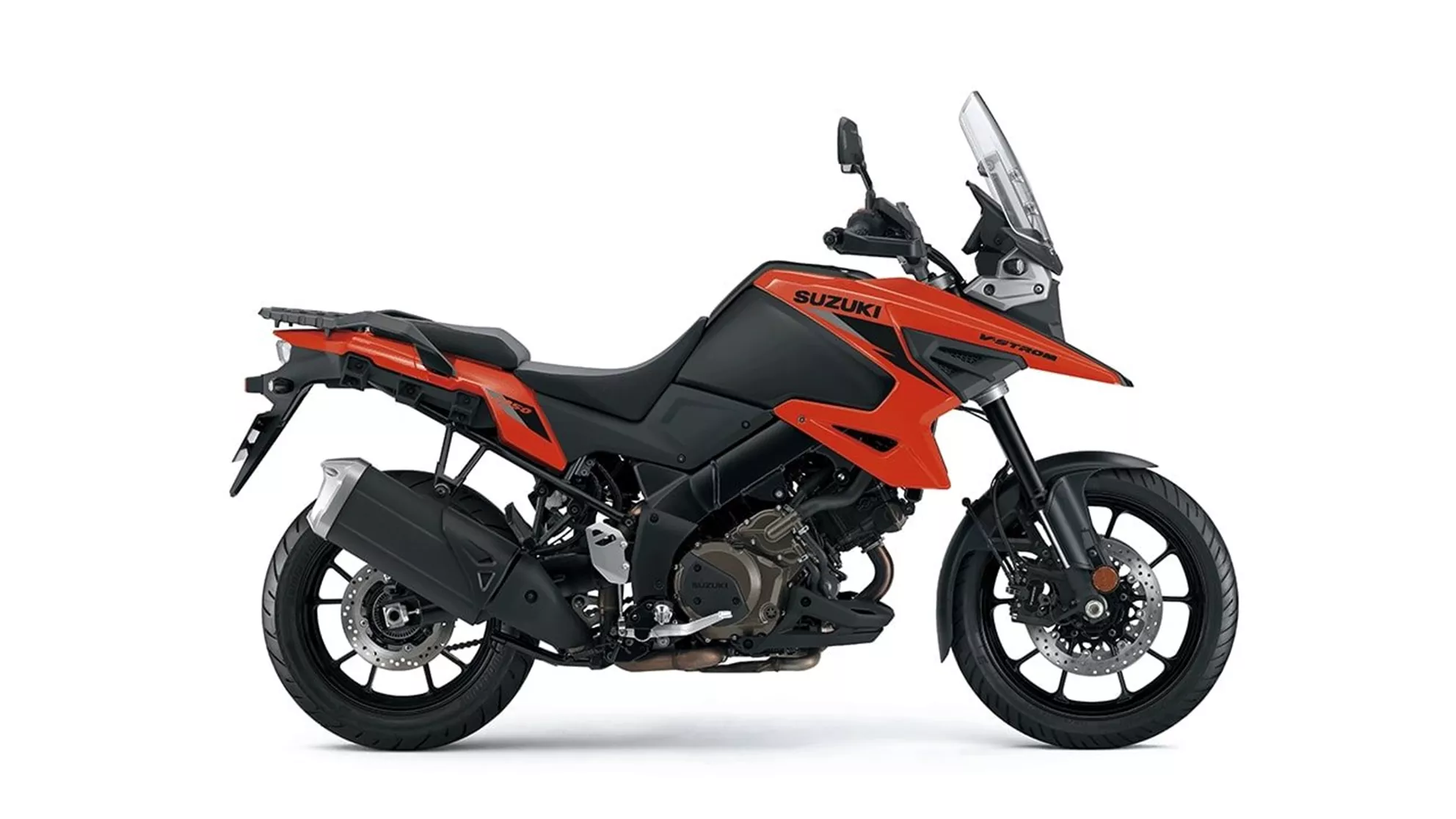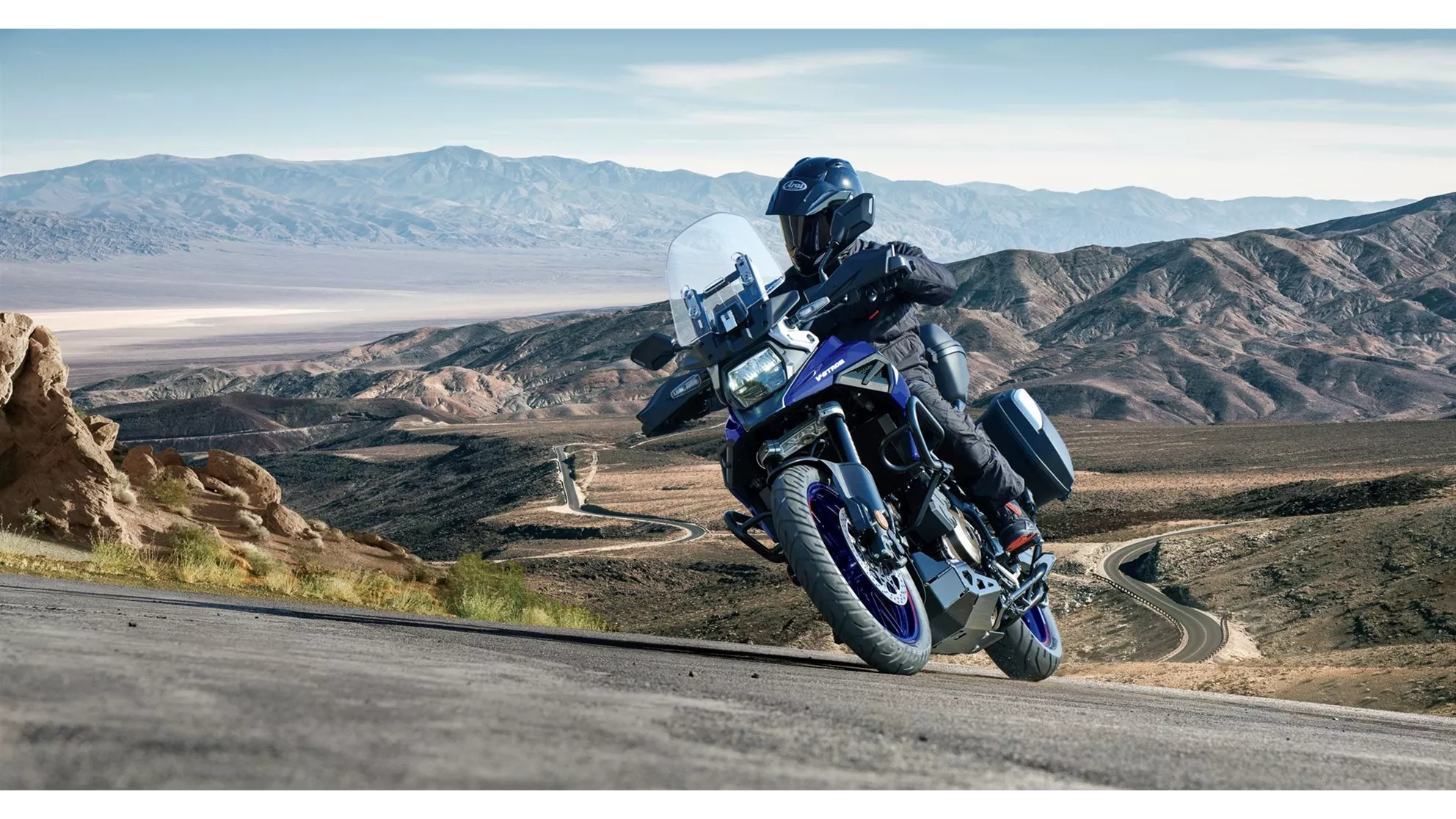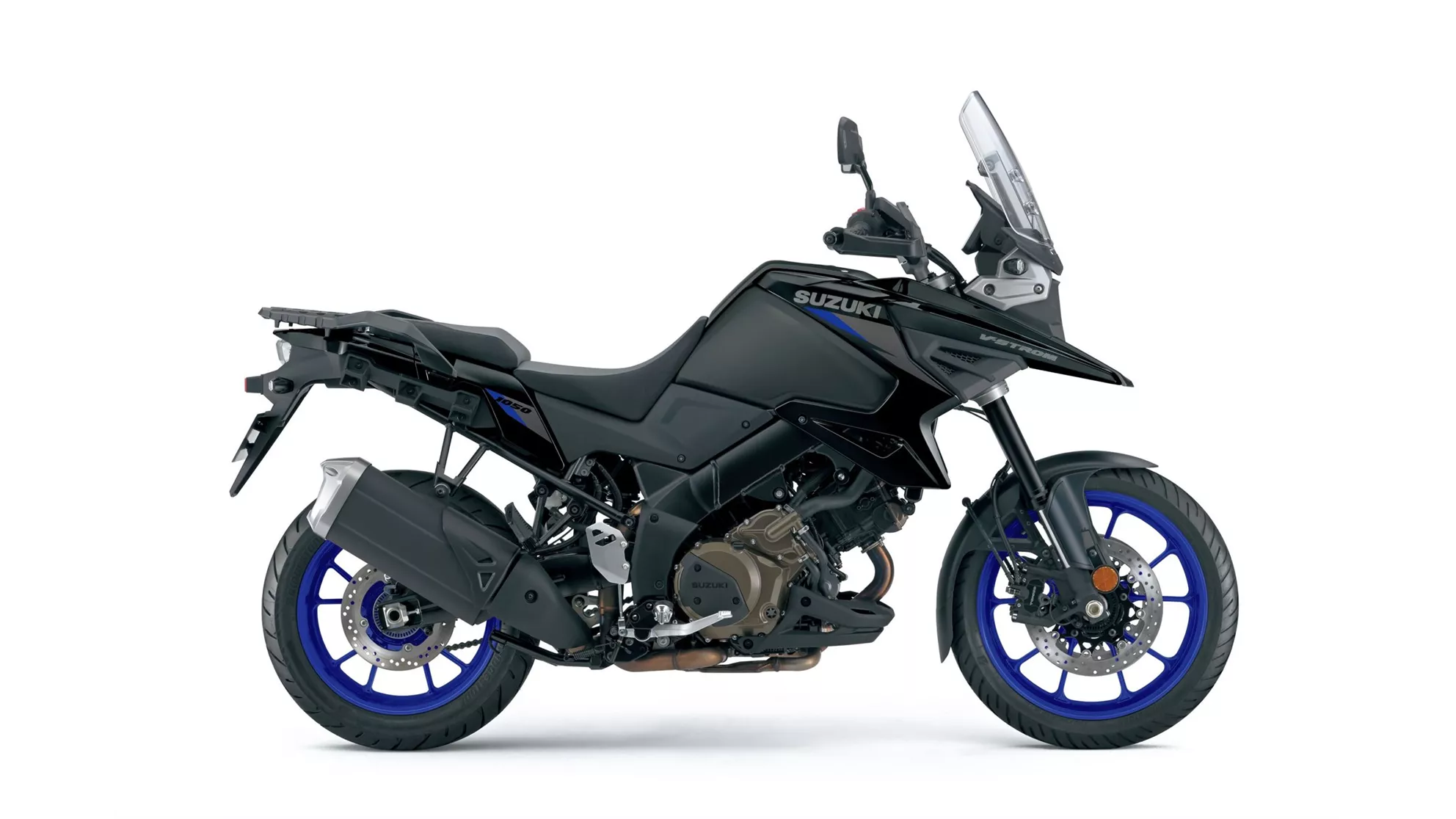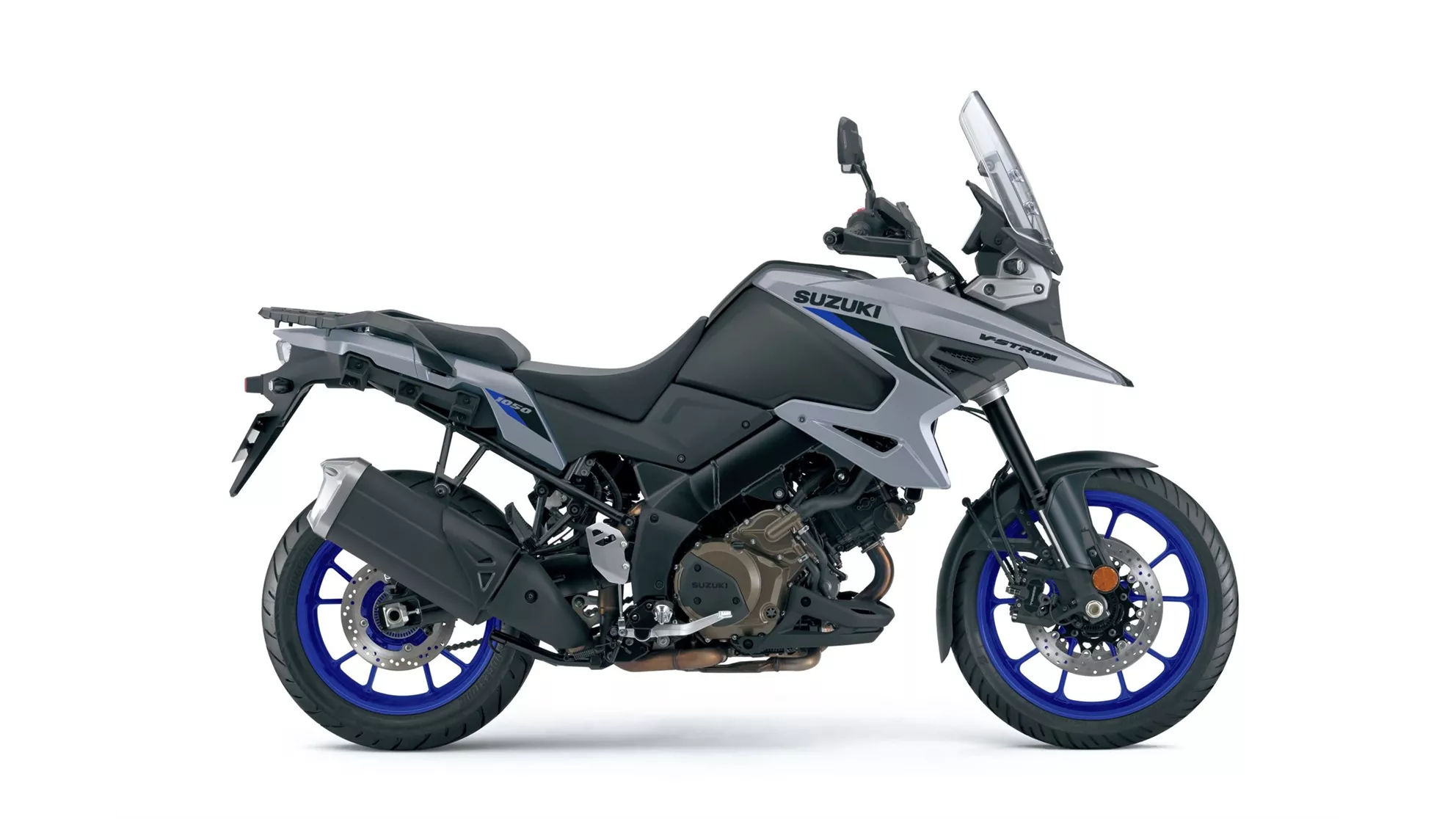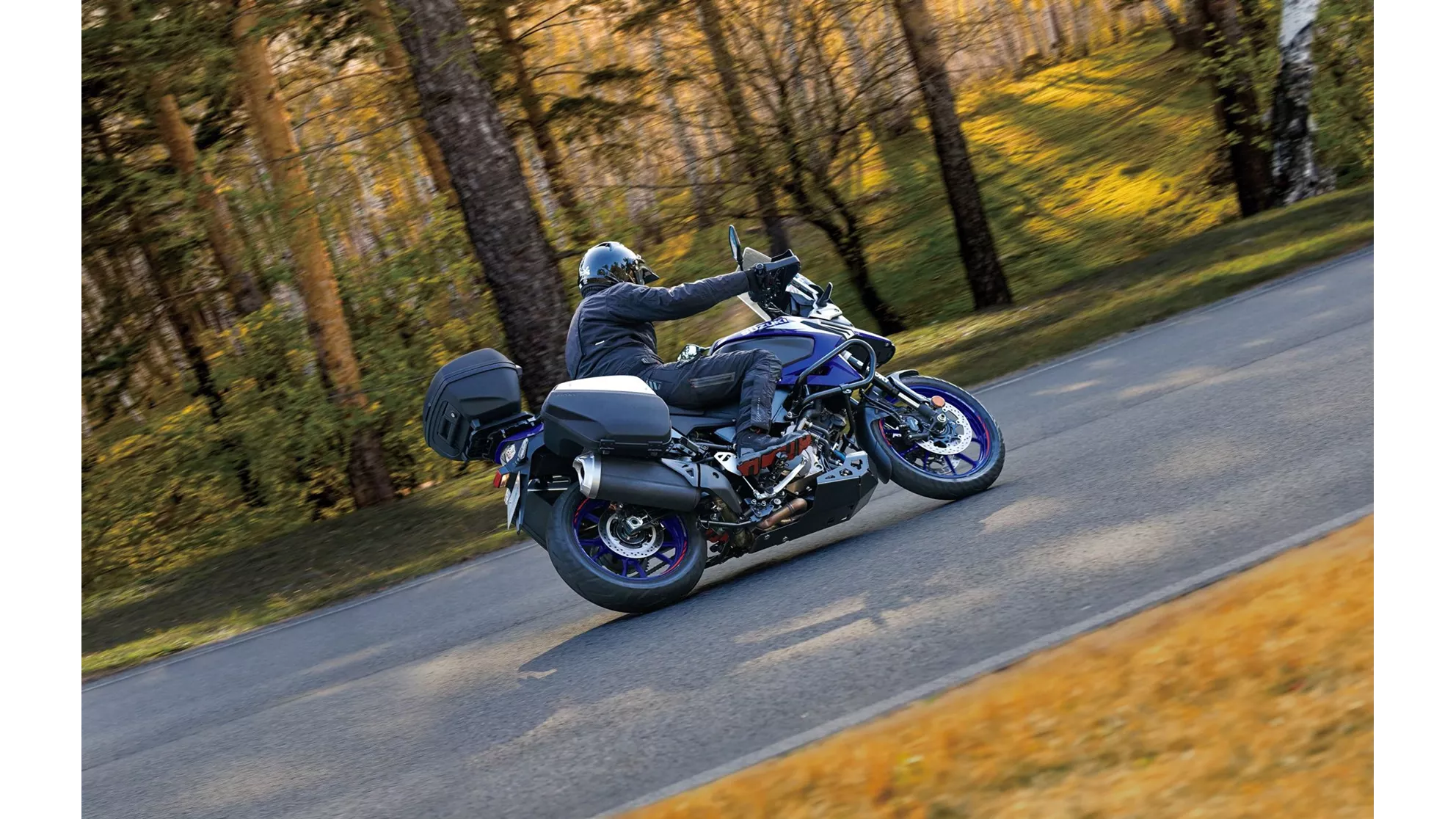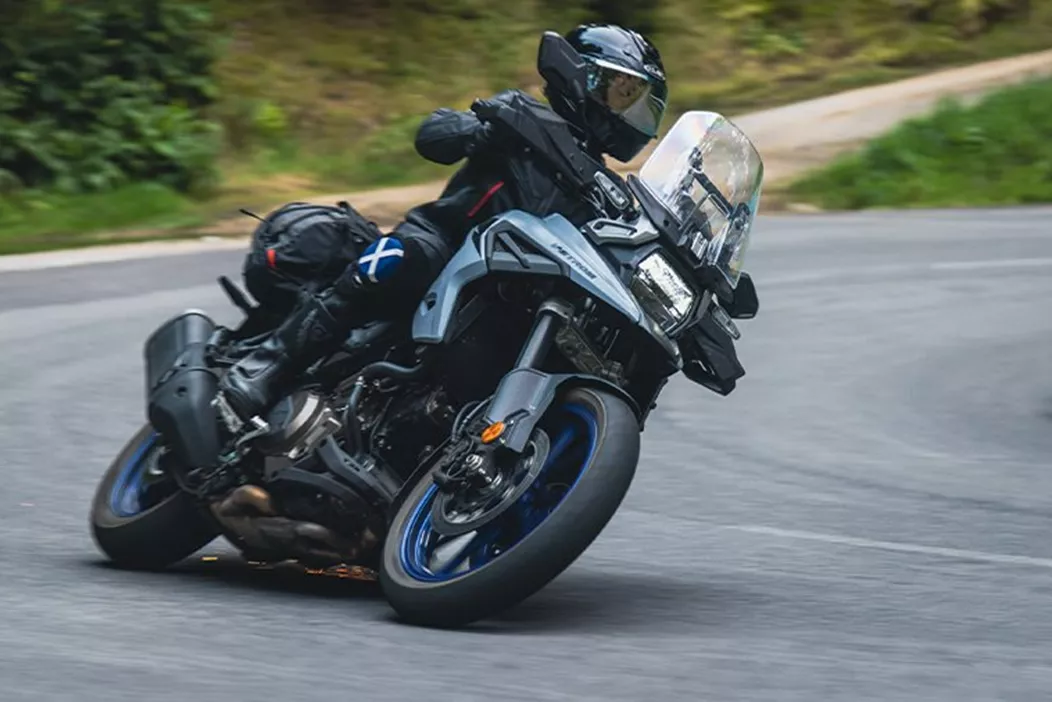BMW R 1300 GS vs. Suzuki V-Strom 1050 – is this even a fair comparison? After all, the GS is not only the class leader but also premium in terms of price, features, and prestige. There is probably no other motorcycle in this segment worldwide with a larger and more dedicated fan base—and for good reason. GS riders are well aware of the strengths and quirks of their machine, and those who don't own a GS have either consciously decided against it or haven't yet gathered the necessary funds. Let's be honest: The new BMW R 1300 GS is a fantastic bike, now gradually shedding its initial teething problems. This makes it tough for any direct competitor—period! But we also know: the underdog often garners a lot of sympathy. When viewed neutrally, one often finds oneself rooting for these underdogs to pull off a surprise victory. Can the Suzuki V-Strom 1050 achieve such an unexpected win in a direct comparison against the BMW R 1300 GS? Let's find out together.
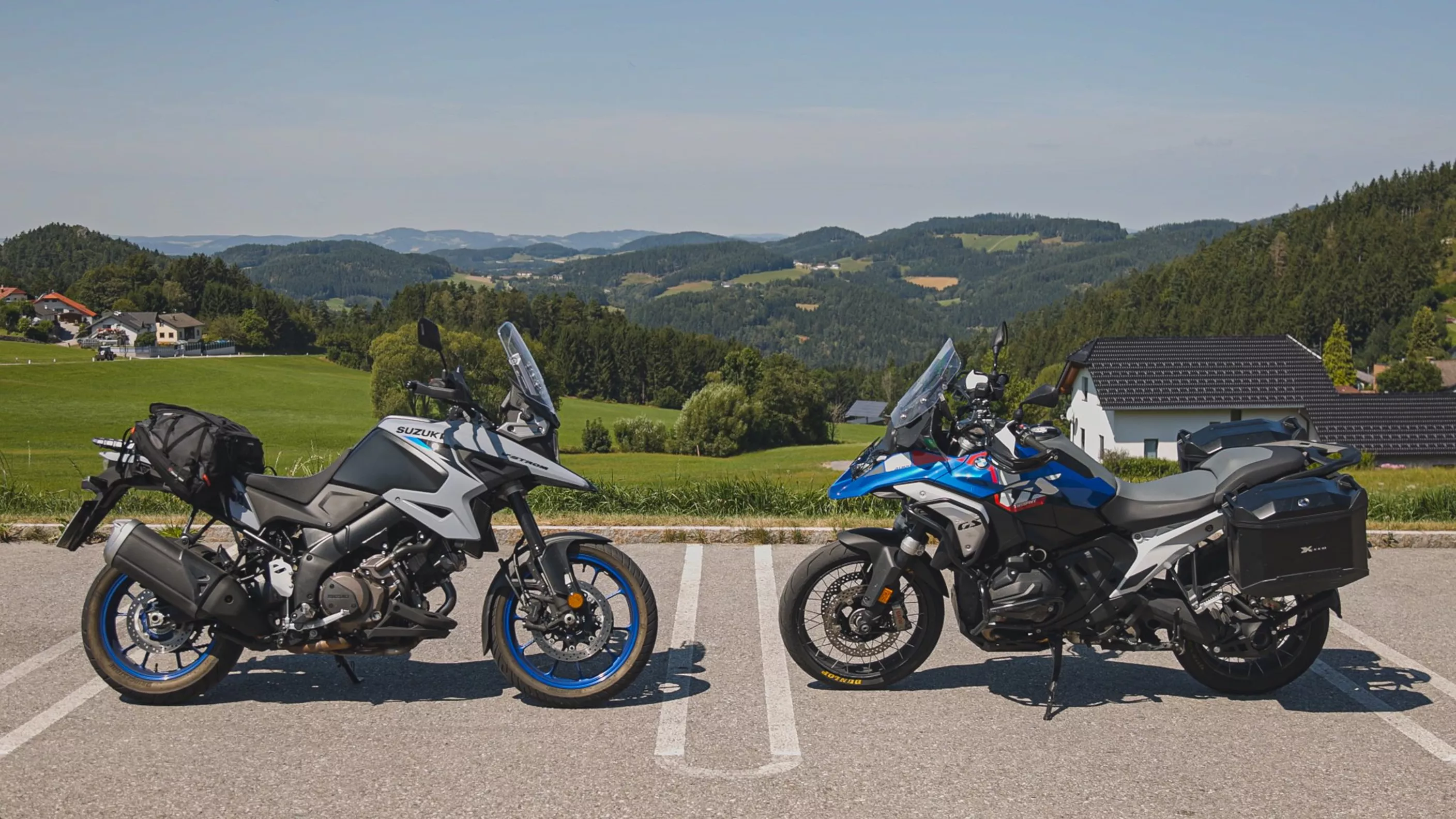
BMW R 1300 GS vs Suzuki V-Strom 1050 - Who wins?
Big price difference, but is it justified?
The match is not new: Germany versus Japan or European versus Japanese motorcycle philosophy. Especially in the fiercely contested adventure bike segment, which stands for prestige and high returns for manufacturers. To begin with: It won't be as clear-cut as it seems.
&width=72&height=72&bgcolor=rgba_39_42_44_0&mode=crop)
Philipp
published on 10/23/2024
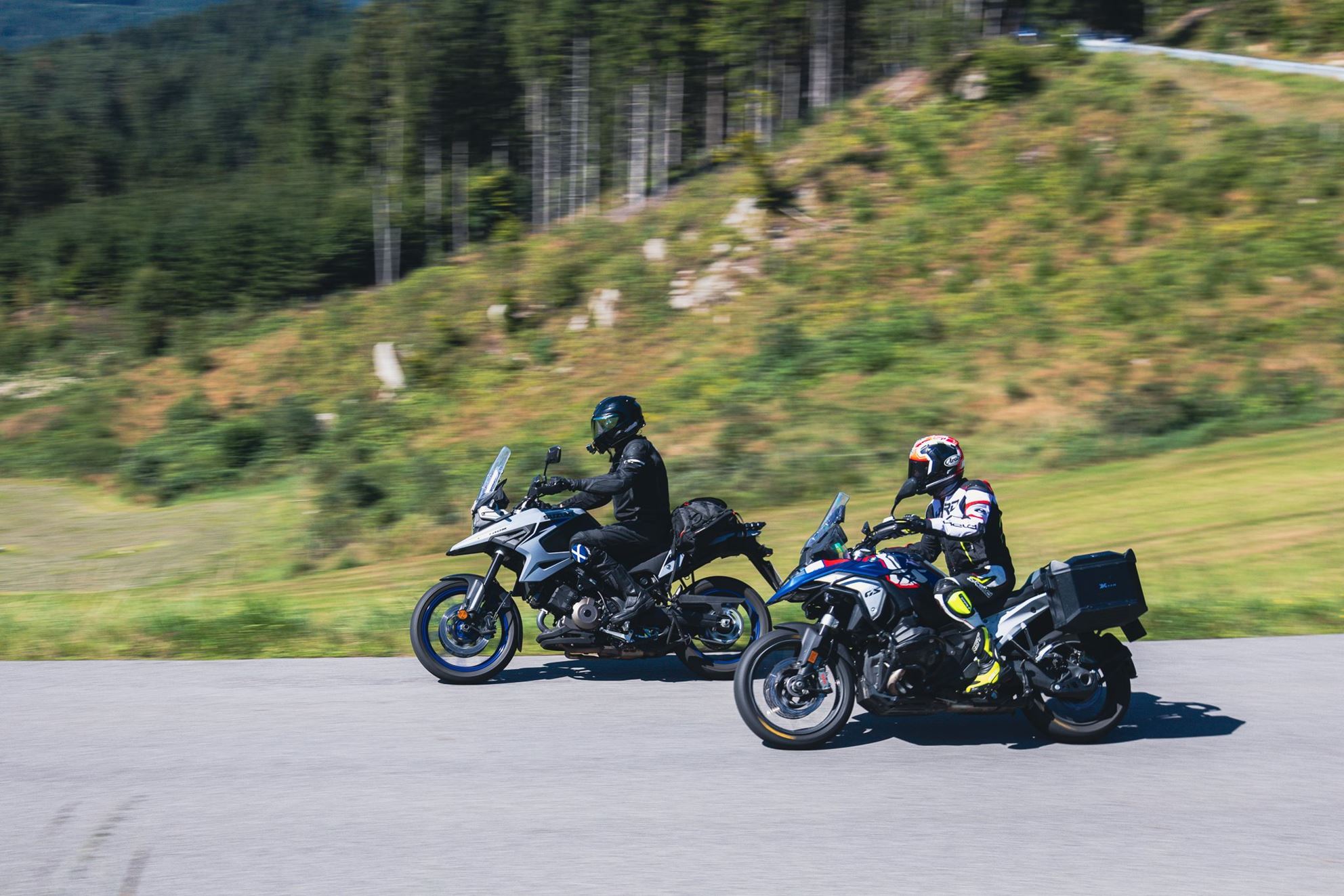
Does the V-Strom 1050 also lead the pack in the test?
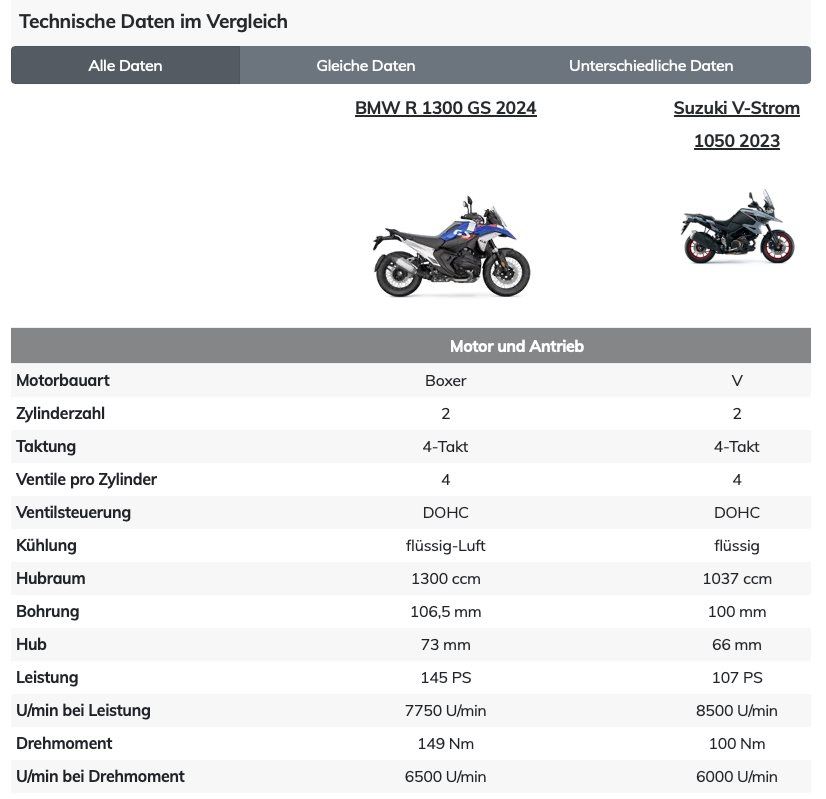
Here you can find the direct technical comparison of the two models: BMW R 1300 GS vs Suzuki V-Strom 1050
Price Comparison – Is Money Really Everything?
The first question when planning this comparison was: Can and should these two models be compared given the significant price difference? There was dissent in the editorial team. The "yes" camp argues that it is indeed possible to determine whether the price difference is justified. The "no" camp counters that due to the large price difference, one must simply use different standards to arrive at an objective conclusion. My personal approach is: Is money the primary deciding factor in this comparison? Or could it be that there are people who consciously choose not to ride a GS because they simply don't want to go with the flow and are deliberately looking for an alternative, regardless of the price? I believe so, which is why I find the comparison more than justified.
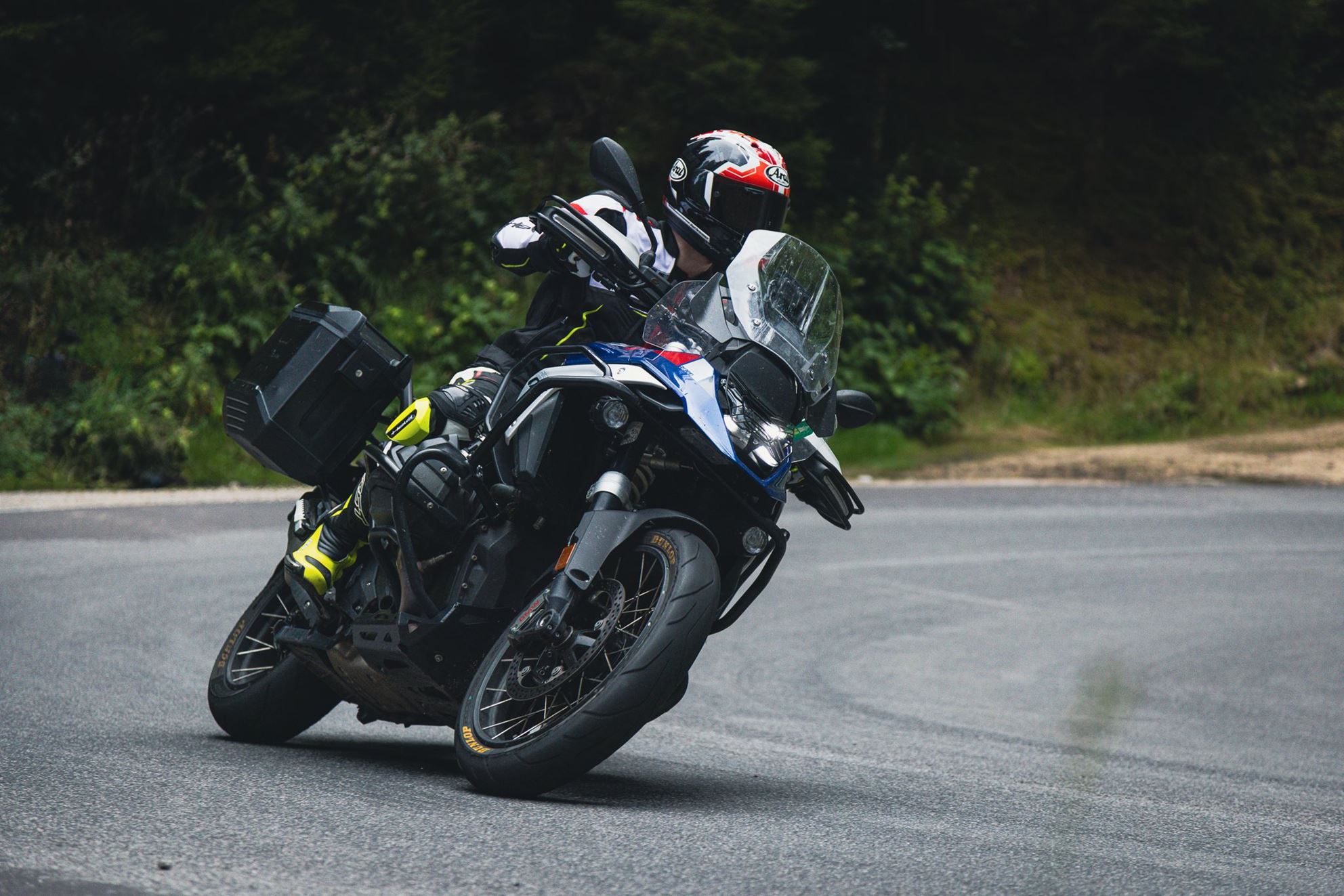
With crash bars, a set of panniers, and a few other bits and pieces, the weight of the GS climbs well over 270 kilograms.
R 1300 GS vs. V-Strom 1050 – the Engine
To put it clearly: GS and V-Strom are worlds apart, especially in terms of engine concept, which is entirely different. The only similarity is the number of cylinders, as both have two. However, while the GS traditionally remains faithful to the boxer concept and in its current stage extracts a robust 145 hp (at 7750 rpm) and even more impressive 149 Nm of torque (at 6500 rpm) from 1,300 cubic centimeters, the V-Strom seems comparatively sluggish – but only on paper. The Japanese bike extracts "only" 107 hp (at 8500 rpm) and 100 Nm (at 6000 rpm) from its 1,037 cubic centimeters in a V-twin configuration. This is a stark difference, and you can feel it in every situation, as the grunt from the GS's low rev range is simply formidable.
Even though this is not as dramatically expressed compared to its predecessor, the R 1250 GS, and the latest GS version prefers to be ridden in a lower gear than before. Still, the torque wave of the GS is thrilling and allows you to lazily cruise around, knowing that a slight twist of the right wrist is enough to feel significant grunt. However, only in direct comparison does one think on the V-Strom 1050 that something substantial is missing. If you don't know any different, you hardly find yourself thinking on the V-Strom that you have a weak or even too weak engine. Quite the opposite: Suzuki has continually improved the V-Strom V-twin, and in its current stage, it is a superb twin-cylinder engine that might not win on paper but is truly a joy-bringer of the highest order in everyday street use. It practically doesn't know constant throttle jerking, unless you are really just above idle in stop-and-go traffic.
The rev-happiness of the V-Strom engine is convincing, even though it noticeably loses grunt at the top end. Its strength is in the middle, exactly where you spend most of your time effectively riding. Yes, the engine rating goes to the GS, no question. Because the boxer pushes like crazy and consumes so little that you think the fuel gauge is broken. A great show, except for the sound, which is unfortunately very weak in the current version - Euro 5 regulations say hello. The Suzuki, on the other hand, rumbles a bit more confidently from the large silencer and reveals: Performance-wise, I am inferior, but in terms of rideability and emotion, I shine. By the way, both models naturally have a quickshifter with blipper (up and downshifting without clutch), but due to the larger engine, it sometimes jerks a bit on the BMW, but the one on the V-Strom is not always buttery smooth either. A stalemate. Otherwise, both gearboxes can be shifted cleanly, the one on the Suzuki perhaps a tad softer and more harmonious, but that could also be due to the different mileages of our test bikes, as very new gearboxes are often a bit more notchy than after a few thousand kilometers and shifts.
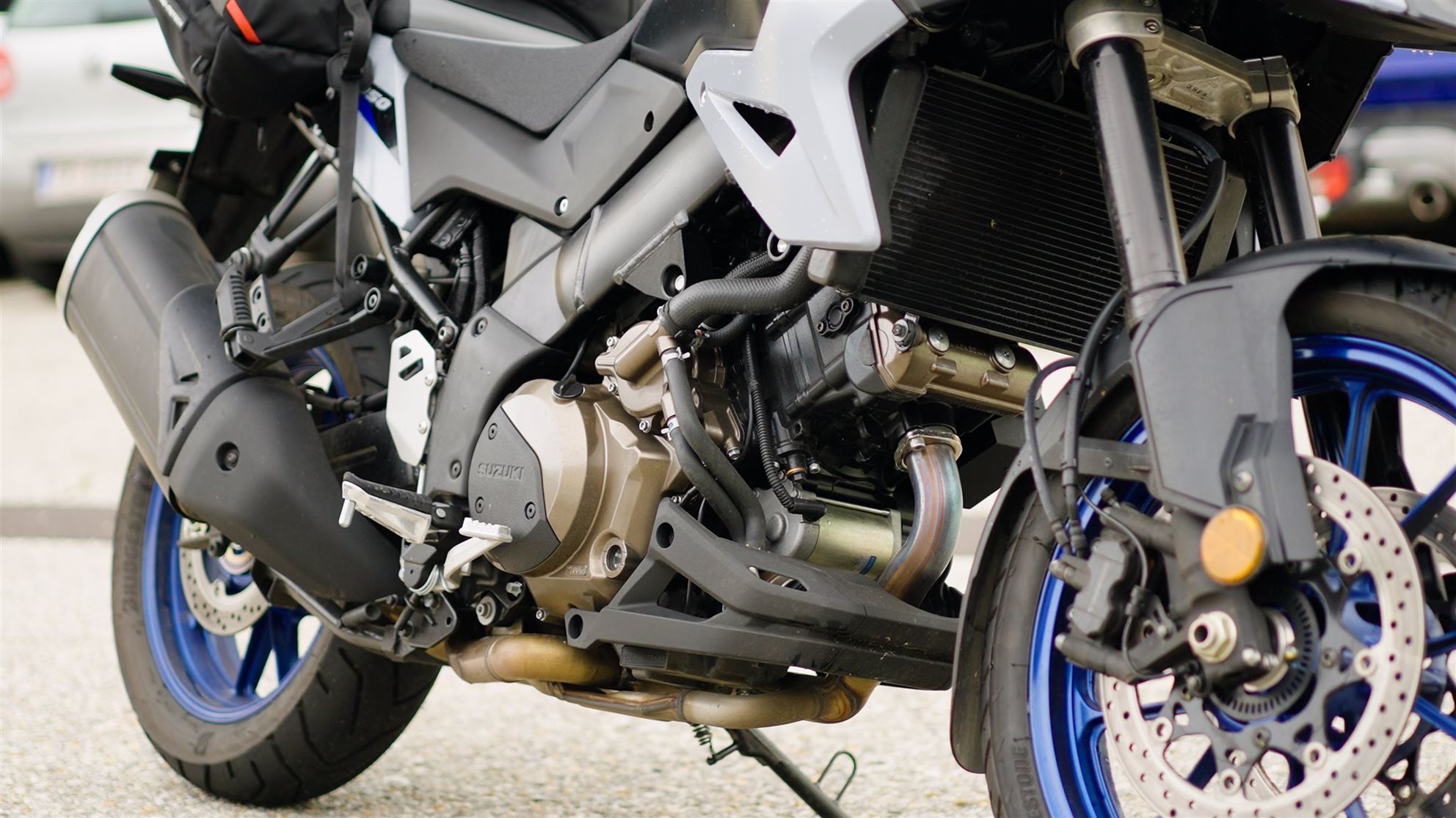
Trump card of the V-Strom 1050: The great engine and the neutral handling.
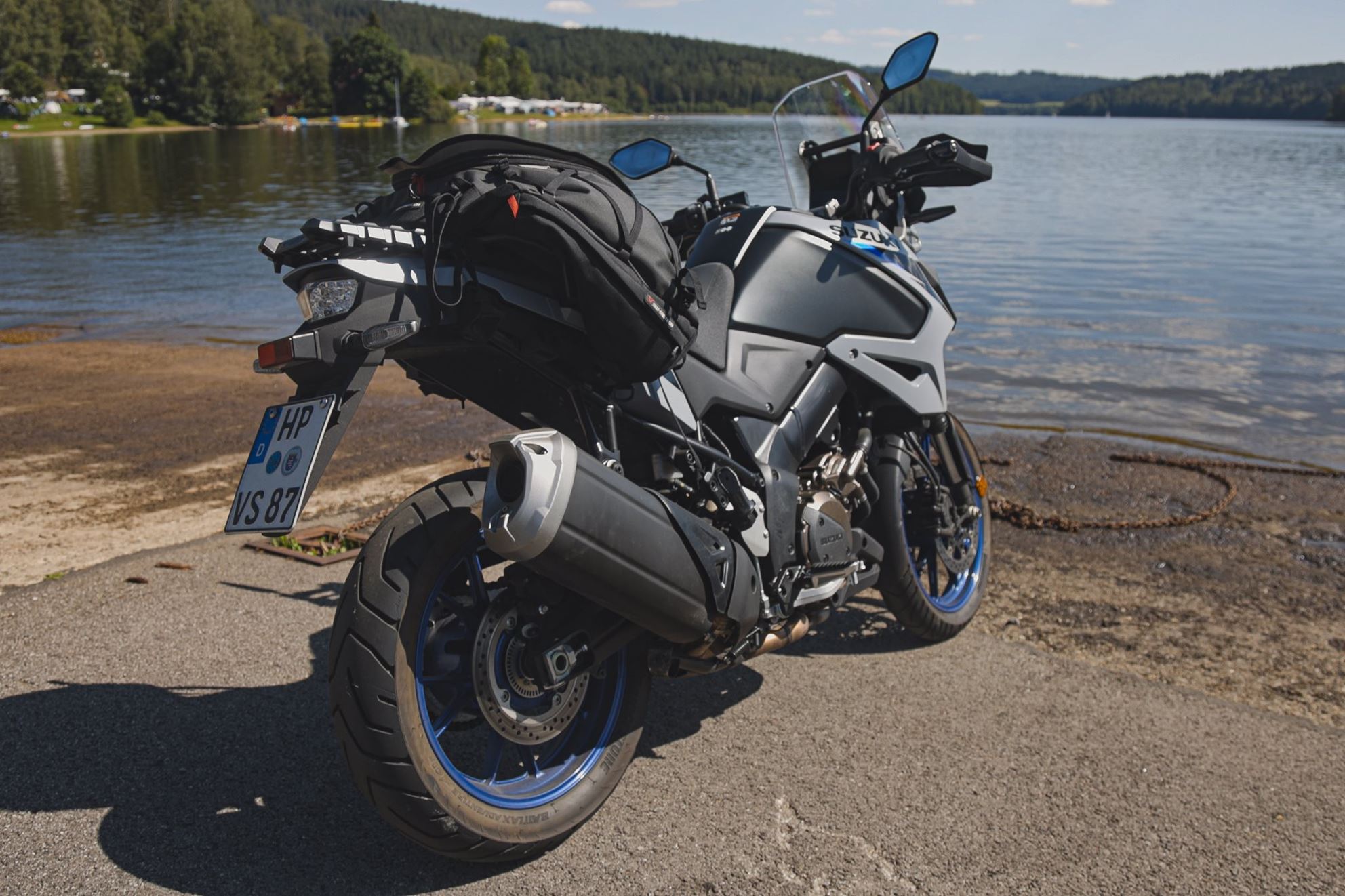
The large muffler on the Suzuki V-Strom 1050 provides a pleasant, bassy sound.
Crucial: The Handling of the Bikes
Of course, the engine and drivetrain remain the heart of many motorcycles. However, for me personally, handling and the riding feel are becoming increasingly important. After all, what good is the best engine in a chassis that can't put the power to the ground or a geometry that introduces unnecessary disturbances? Exactly, nothing.
The good news upfront: Both the GS and V-Strom are fundamentally sound motorcycles in terms of chassis, both exhibiting foolproof handling. It's so simple and playful that it only takes a few meters to feel completely at ease on both bikes. Nevertheless, there are noticeable differences: The GS still relies on the Telelever system at the front and the Paralever at the rear. This, combined with the low center of gravity of the boxer engine and its longitudinally rotating crankshaft, results in nimble handling and a cushioned suspension behavior. You glide over the road rather than bouncing. For motorcyclists experiencing the system for the first time, it's a significant adjustment because the typical fork dive when trail braking into a corner is simply absent, and thus the feedback that every other motorcycle with a conventional fork or USD fork provides is missed. This means: On the GS, you feel little from the front wheel and have to trust more that the tire will hold. And usually, it holds easily until the pegs scrape or even the cylinder touches the asphalt. Still, the GS feels like it sags slightly when you abruptly let off the throttle, but equally at the front and rear. This results in a constant movement around the vertical axis, like a gentle rocking, but always damped or predictable and not unpleasant or anything like that. A GS moves, so what!? You can get used to it, and in fact, you quickly adapt to it.
Here, the V-Strom is more of a "normal" motorcycle, meaning the 43-mm KYB USD fork dives predictably when trail braking and even provides a bit more nimbleness at the corner entry than you would expect from a motorcycle weighing around 242 kilograms. Paired with the truly excellent front brake, which operates at supersport level in terms of modulation, you hit the corner entry perfectly, wonderfully neutral, and can modulate speed well into the radius with the front stopper and a finger on the lever. Despite the 19-inch front wheel with 110/80 tires, the good and fully adjustable fork gives a bit of a supermoto feel at the corner entry. However, you can't really say that the V-Strom rides more nimbly or handles better than the GS; I would say they are on a very similar level but with a different fundamental feeling. While the V-Strom transparently communicates to the rider what the Bridgestone tire at the front is doing, you are somewhat decoupled from the tire on the GS but still ride stably and quickly through the radius.
And that is precisely the GS factor that distinguishes the BMW and makes it so unique in the segment: Even though you feel less, you never have the concern of being confronted with a loss of grip. Basically, the suspension setup of the V-Strom 1050 is really successful from the factory. The motorcycle doesn't rock, moves noticeably in sporty operation, but never unpleasantly, unpredictably, or unsettlingly. Quite the opposite: The slight movements are always well damped and transparently communicated to the rider, so they feel in the saddle how much reserve is still available without being confronted with a fait accompli. Practical: The handwheel for the hydraulic preload of the shock absorber, allowing you to adjust the rear height for additional luggage or pillion operation with just a few adjustments. On our long-term test GS, this works with the electronic suspension at the push of a button. Additionally, the firmness of the dampers can be adjusted, for example, for off-road, road, or dynamic.
Notable: In Dynamic mode, second-order roads are somewhat noticeable in the intervertebral discs, while the Road mode allows the GS to move unnecessarily much on uneven roads at a brisk pace. For me personally, the sweet spot would be right in between, so as a rider, you have to consider beforehand whether you want to ride more firmly or a bit softer – naturally adjusted to the road. And if you get it wrong, it can be easily corrected from the cockpit, whereas the V-Strom requires tools and some suspension know-how to make changes. Who wins the handling rating? No one – or both. A tie, because even though they feel very different, both work really well!
- How much does a Suzuki V-Strom 1050 cost?
- Here you will find an overview of the price level of new and used motorbikes!
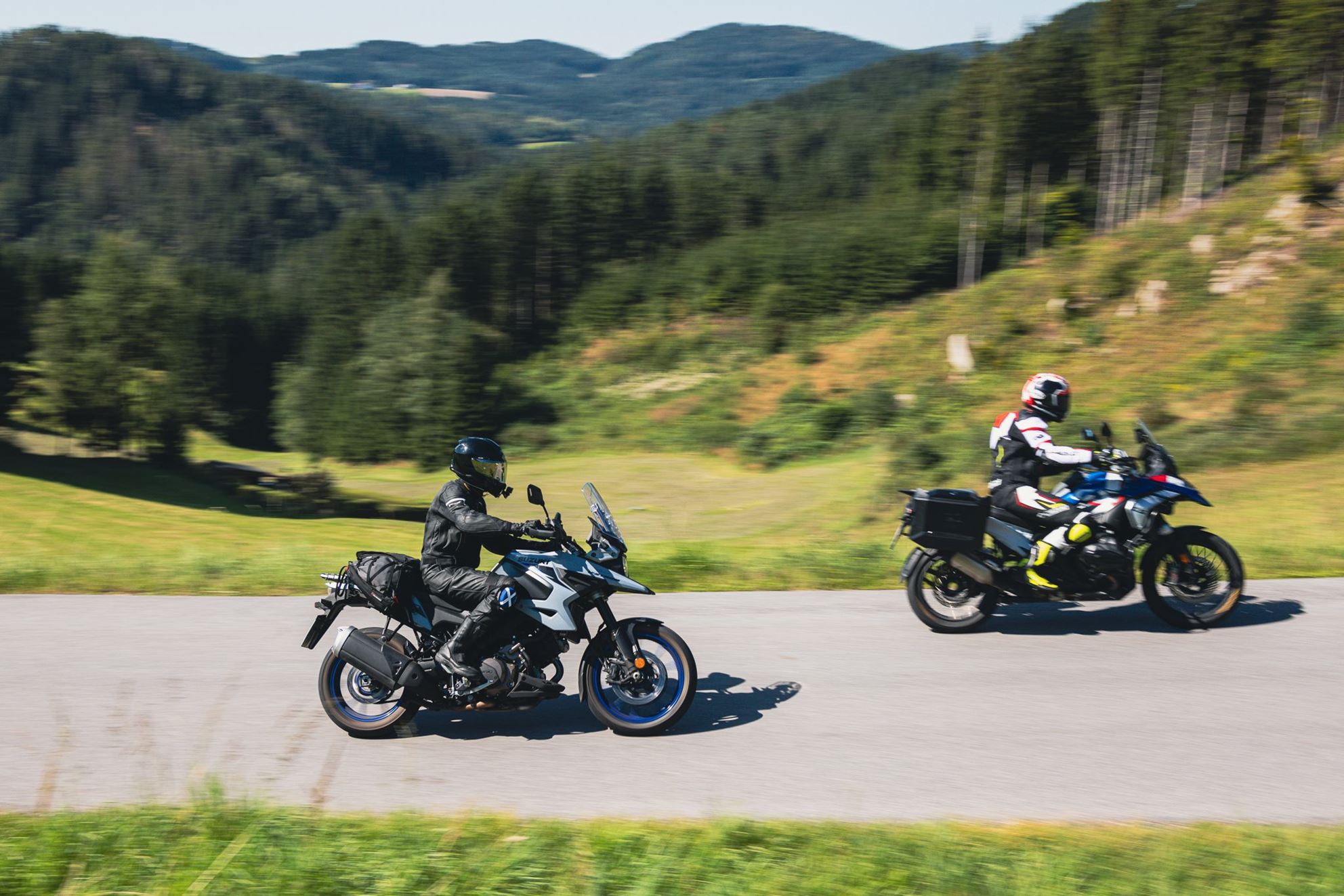
Both bikes ride neutrally, stably, and safely, yet they also feel noticeably different.
King of Extras: BMW R 1300 GS
In terms of equipment and features, the GS mercilessly overshadows its Japanese competitor. Distance radar, electronic suspension, electronic windshield, seat heating, and much more—the BMW extras list is long (and expensive). So, if you're looking for a bike that offers everything and can be maximally upgraded, the GS is the choice—and it requires deep pockets. In comparison, the V-Strom 1050 seems relatively spartan, although you won't miss anything. The extras relevant for everyday motorcycle use in this segment are already included as standard. Therefore, a clear win in technology and upgrades for the GS, but as a V-Strom rider, there's no need to lament (except perhaps for the electronic suspension from the GSX-S1000GX).
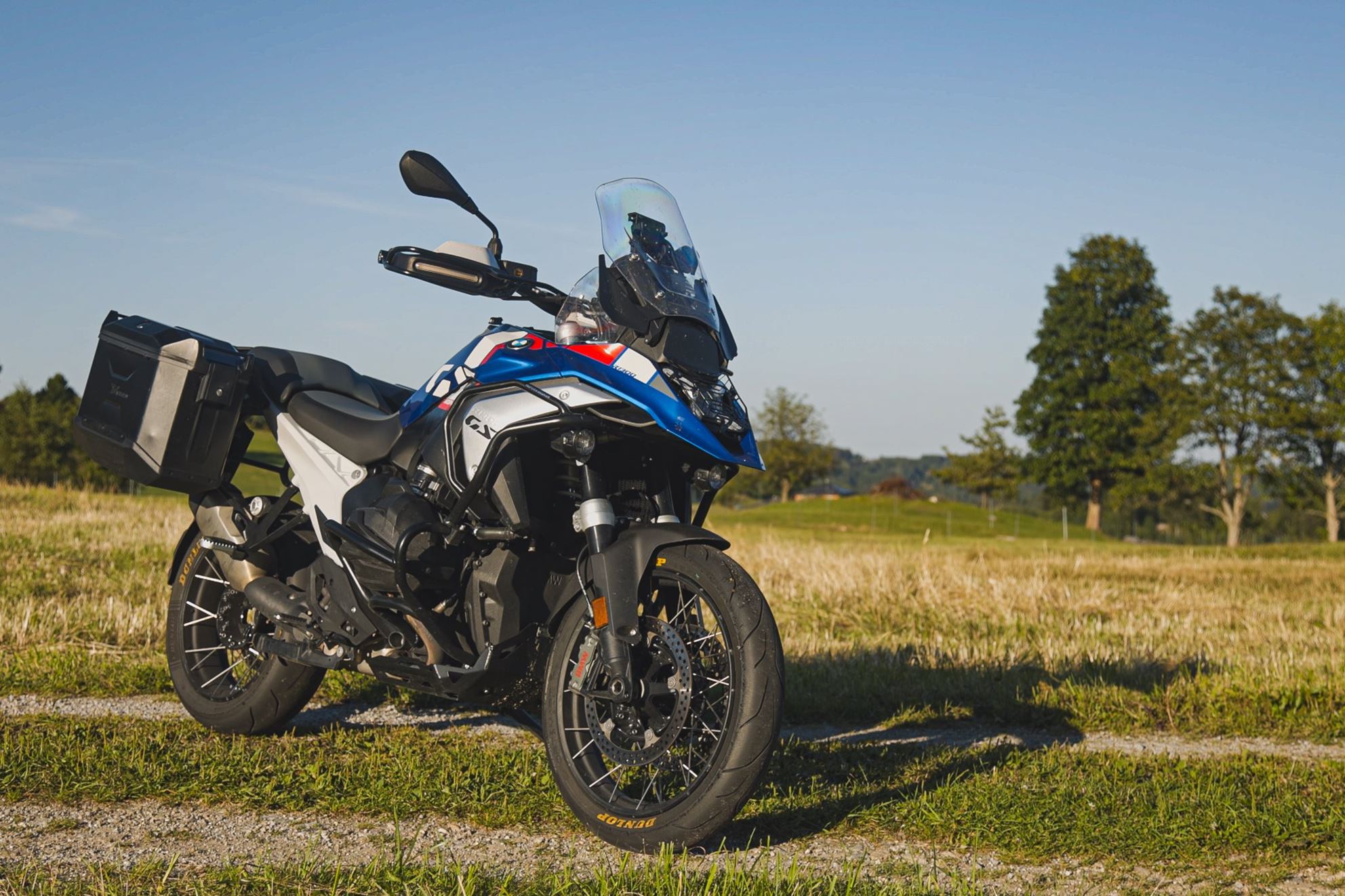
The BMW R 1300 GS offers everything a biker's heart desires - provided one can afford and wants it.
Comfort and Safety
Both the BMW R 1300 GS and the Suzuki V-Strom 1050 are motorcycles that need to handle the big journey: solo, with a pillion, with luggage, and in any weather, uphill, downhill. And they can. Both! However, the GS is the slightly more comfortable bike, offering a bit more wind and weather protection, gliding more smoothly over 400 kilometers and more at a stretch. This is where the price difference shows, as the nice gimmicks of the GS pay off when you're not riding at maximum lean angle, but rather traveling the world together in a more relaxed manner.
This is also possible on the V-Strom 1050, but with that slight reduction in comfort in the final analysis. Because it becomes apparent that you can only adjust the windshield of the V-Strom 1050 from the front while stationary using a flap, and not conveniently from the saddle while riding. Or that you have to adjust the suspension with tools and not just with two buttons on the left handlebar controls. And because when fully loaded, you appreciate the nearly 50 Newton meters more torque to easily overtake the column in front of you, even in the wrong gear.
When it comes to brakes, the V-Strom 1050 is a powerhouse. The mentioned controllability and the deceleration itself are really very good and noticeably sportier than on the GS. The GS also decelerates absolutely without complaint, but the Suzuki has that extra bit of bite and directness that will especially please sporty riders. And: On the GS, the ABS and brake system is tuned so that during braking on the front wheel, the rear wheel is slightly braked as well (for stabilization), and it also works the other way around, so that when the rear brake is applied, the front brake is slightly engaged. This can be a surprise if you only want to use the engine and rear brake to decelerate, as the front suddenly brakes as well. However, this function can be deactivated in Enduro mode. But to cut the topic of brakes short: Both models have very good brakes that nip any form of criticism in the bud, but the Suzuki is ahead.
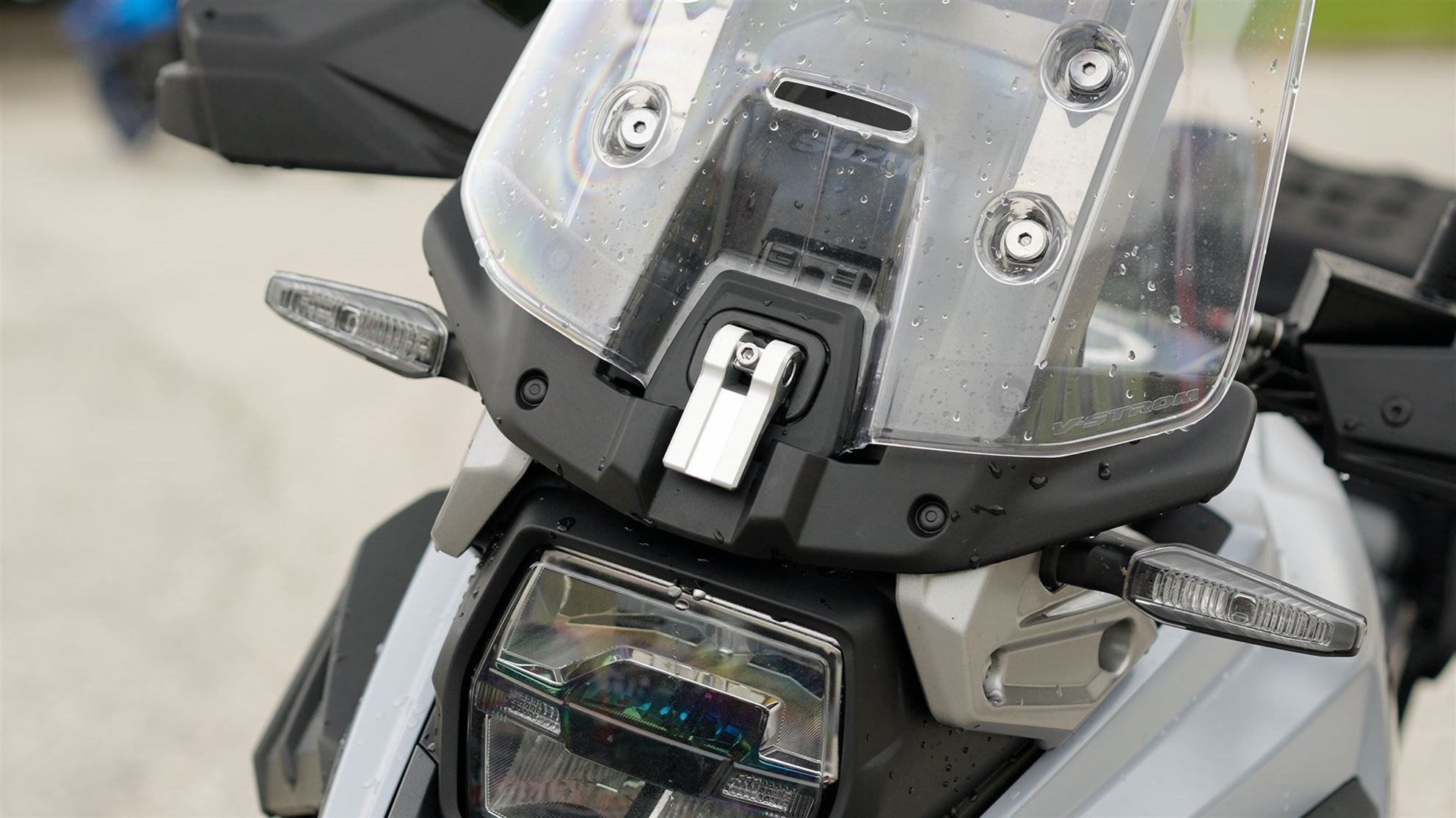
The adjuster for the windshield on the Suzuki V-Strom 1050 is located at the front - not operable while riding. What a pity.
Is the price difference justified?
Returning to the initial question: Is the significant additional cost of the BMW R 1300 GS over the V-Strom 1050 justified or not? (Current prices Suzuki V-Strom 1050 / BMW R 1300 GS) In terms of riding dynamics, the GS is only slightly superior to the V-Strom – across all purposes. However, the additional cost of around 10,000 euros or more is quite steep and, in my personal opinion, hardly justifiable. Because the GS customer pays a high price for the extra performance and features. And the smile under the helmet feels no less wide on the V-Strom 1050 than on the GS when ridden appropriately.
However, the BMW offers a significant bonus: its resale value. The BMW GS is like the VW Golf: a guarantee for a secure resale. Even after several years, you still get a good return on the purchase price with the BMW GS. In terms of resale value, the Suzuki V-Strom 1050 cannot compete, which somewhat justifies the higher price, but not entirely. Thus, my personal opinion is clear: The Suzuki V-Strom 1050 is not the better motorcycle, but it offers the better value for money and is rightfully a genuine alternative to the BMW R 1300 GS.
MoHo Hotel Tip in the Land of 1000 Twisties
Finally, a hotel recommendation from the 1000PS editorial team. We stayed at the MoHo Hotel Rockenschaub in Liebenau for the comparison test and enjoyed delicious food and drinks. Since the hotel owner Franz "Rocky" Rockenschaub is himself a very enthusiastic biker, we can only recommend to all guests to ask him for various route suggestions in the area. These are handpicked and truly deserve the label: highly recommended!

Hotel Recommendation: MoHo Rockenschaub in Liebenau
- How much does a BMW R 1300 GS cost?
- Here you will find an overview of the price level of new and used motorbikes!
&width=60&height=60&bgcolor=rgba_39_42_44_0&mode=crop)
Suzuki V-Strom 1050 2024 - Experiences and Expert Review
Philipp
With the revision and expansion of the 1050 models, Suzuki now offers the right large V-Strom for everyone. Those who know from the start that they will almost exclusively stay on the road will find a reliable travel companion or even a daily buddy in the standard model. For those who want fewer restrictions in their choice of paths and also regularly ride on unpaved terrain, the DE is now a good choice. However, the main argument remains this engine, which with its 107 horsepower and especially its ample torque, leaves little to be desired.
&width=60&height=60&bgcolor=rgba_39_42_44_0&mode=crop)
BMW R 1300 GS 20204 - Experiences and Expert Review
Philipp
BMW has developed the new R 1300 GS with a wealth of experience and expertise, which is evident in its advanced technology and versatility. The model appeals to both seasoned and new riders, offering an impressive combination of performance, comfort, and cutting-edge features. It is a successful blend of compactness, power, and luxury, performing well both off-road and on the street. Unfortunately, the first series of the new 1300 GS is not yet fully refined in some areas, as evidenced by several recalls and susceptible components.
More from 1000PS Magazine
BMW R 1300 GS vs Suzuki V-Strom 1050 - Who wins? Images
Source: 1000PS














































